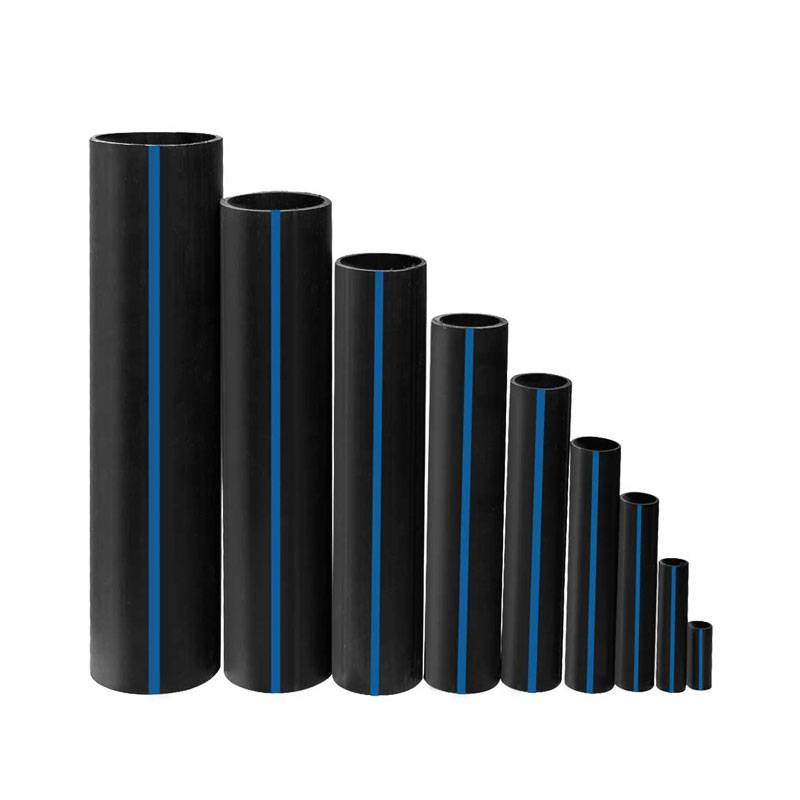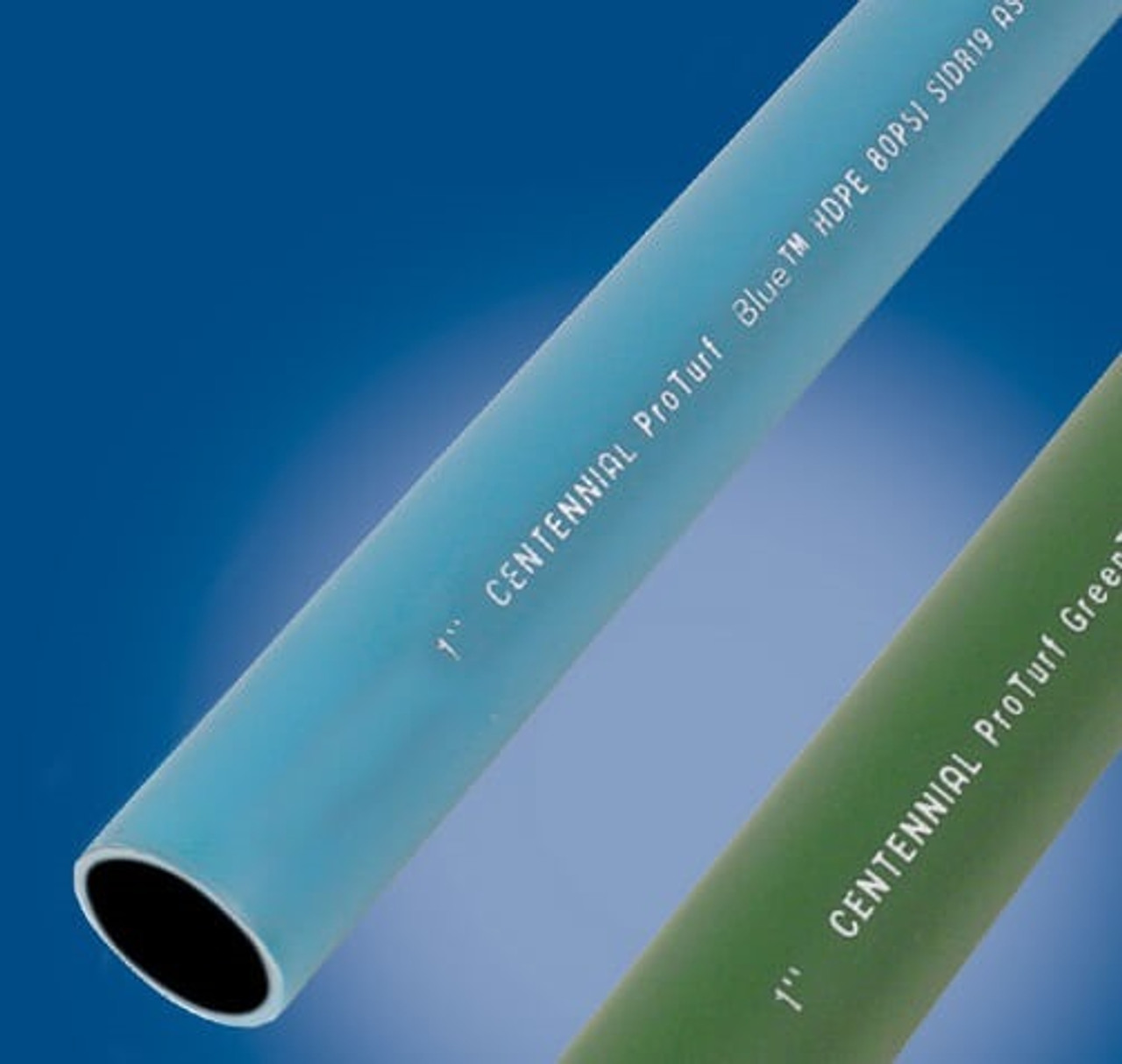Why Builders Prefer hdpe pipe in stock Midland TX for Reliable Supply
Wiki Article
Explore the Manufacturing Refine Behind High-Quality HDPE Pipe and Its Applications
The manufacturing procedure of high-quality HDPE pipelines is complex and methodical. It starts with the option of basic materials that enhance efficiency. Following this, ethylene undertakes polymerization to develop material, which is then shaped with extrusion. Quality assurance is critical, ensuring that the last item fulfills strict standards. The journey of HDPE pipes does not finish with production. Their applications throughout various markets expose a broader value worth examining.Understanding HDPE: Features and Advantages

High-density polyethylene (HDPE) is a functional thermoplastic understood for its sturdiness and resistance to various ecological factors. This material displays superb tensile stamina, making it ideal for requiring applications. Its low-density framework adds to a light-weight item, assisting in ease of dealing with and setup. HDPE likewise showcases remarkable resistance to chemicals, which reduces deterioration when subjected to rough substances.
The material's reduced moisture absorption better improves its durability, making it suitable for use in pipelines and tank. In addition, HDPE is resistant to ultraviolet (UV) radiation, ensuring that products keep their honesty even when exposed to sunlight. Its versatility allows for the creation of complex forms without jeopardizing strength. The eco-friendly nature of HDPE, often stemmed from recycled materials, includes to its allure, advertising lasting methods in manufacturing. Overall, these buildings and benefits make HDPE a preferred option for numerous commercial and customer applications.
Basic Material Selection for HDPE Production
The choice of resources for HDPE manufacturing is necessary to verify the end product satisfies the preferred requirements and high quality criteria. High-density polyethylene (HDPE) is mainly created from polymerized ethylene, stemmed from fossil fuels such as natural gas or petroleum. The quality of these feedstocks considerably influences the mechanical and thermal residential properties of the last HDPE.Ingredients also play a considerable role in enhancing HDPE's performance, including anti-oxidants, UV stabilizers, and colorants, which enhance longevity and resistance to ecological factors. The option process should consider not only the chemical composition of the raw materials but also their handling characteristics to ensure effective manufacturing.
Additionally, the sourcing of basic materials should focus on sustainability and compliance with ecological regulations, as liable techniques are critical in today's market. Inevitably, mindful basic material option lays the structure for creating top quality HDPE pipelines ideal for varied applications.
The Extrusion Process: Shaping HDPE Pipe
The extrusion procedure plays a crucial role in shaping HDPE pipes, starting with meticulous material preparation strategies that guarantee ideal flow and consistency. Equally crucial is the design of the die, which straight affects the last dimensions and surface top quality of the pipe. Together, these elements add greatly to the efficiency and quality of HDPE pipeline production.Product Preparation Strategies
Reliable production of HDPE pipes begins with meticulous product prep work strategies, specifically the extrusion process. During this phase, high-density polyethylene material is very first dried to get rid of dampness, making sure ideal circulation attributes. The material is then fed into the extruder, where it undertakes home heating and melting, transforming right into a viscous state. This home heating process is meticulously managed to keep the product's honesty and performance. The liquified HDPE is forced through a die, forming it into a continuous pipeline kind. Appropriate temperature level administration during extrusion is important, as it straight influences the material's residential properties and the last product quality. Once formed, the HDPE pipeline is cooled down and reduced to defined sizes, all set for succeeding processing and applications.Die Design Value
Precision in die layout plays a vital function in the extrusion procedure of HDPE pipes. The die works as the final shaping tool, straight influencing the pipeline's dimensions, wall surface density, and surface coating. A properly designed die guarantees uniform material circulation, minimizing issues such as abnormalities and weak points. The geometry of the die need to be enhanced to accommodate the certain properties of HDPE, including its viscosity and thermal actions throughout extrusion. Additionally, the cooling price of the material as it travels through the die can noticeably affect the pipeline's architectural honesty. As a result, buying sophisticated die technology is important for manufacturers intending to generate high-grade HDPE pipelines that satisfy sector requirements and consumer expectations.Quality Assurance Steps in HDPE Production
Different variables affect the quality of HDPE pipe production, efficient quality control actions are critical to guarantee consistency and integrity in the last product (hdpe pipe suppliers Midland TX). Trick high quality control techniques consist of strenuous material evaluation, confirming that the raw polyethylene fulfills well established standards for purity and thickness. During the extrusion process, parameters such as temperature, pressure, and cooling time are very closely checked to maintain dimensional precision and structural honestyAdditionally, post-production testing is essential; makers commonly conduct hydrostatic tests to evaluate the pipe's strength and resistance to pressure. Aesthetic evaluations for surface area problems additionally boost top quality assurance. Accreditation from appropriate criteria organizations, like ASTM or ISO, supplies an extra layer of reputation. By applying these detailed quality control actions, manufacturers can minimize issues, enhance efficiency, and make certain that the HDPE pipelines satisfy the certain requirements of various applications, ultimately causing client fulfillment and count on the item.
Applications of HDPE Pipe Throughout Industries
HDPE pipes are used across numerous fields because of their toughness and adaptability. In water distribution systems, they guarantee efficient shipment, while in wastewater monitoring, they supply reputable remedies for waste transportation. Additionally, agricultural irrigation networks gain from HDPE's resistance to deterioration and versatility, making it a suitable choice for modern-day farming methods.
Water Distribution Equipments
A substantial variety of sectors rely upon high-density polyethylene (HDPE) pipelines for effective water circulation systems. Understood for their longevity and resistance to deterioration, HDPE pipes are extensively made use of in local water supply networks, farming irrigation, and commercial applications. Their lightweight nature facilitates very easy handling and installation, reducing labor prices and time. In addition, HDPE pipelines can accommodate numerous pressure levels, making them appropriate for both low and high-pressure systems. hdpe pipe fittings Midland TX. The flexibility of the product permits seamless combination right into existing framework, decreasing the need for considerable excavation. Furthermore, HDPE's resistance to chemical leaching guarantees that the water provided continues to be secure and clean, making it an optimal choice for keeping the top quality of drinkable water throughout various industriesWastewater Monitoring Solutions
Efficient water circulation systems likewise pave the method for innovative wastewater management remedies, where high-density polyethylene more info (HDPE) pipelines play a considerable duty. Renowned for their durability and resistance to rust, HDPE pipes are suitable for moving wastewater in various settings. Their flexibility permits easy setup in complicated settings, decreasing the demand for comprehensive excavation. Furthermore, HDPE's smooth interior surface area lowers rubbing, boosting flow rates and effectiveness. These pipes are likewise resistant to chemical leaching, ensuring that impurities do not jeopardize the surrounding setting. Industries, towns, and therapy centers significantly depend on HDPE pipelines for their dependability and durability, making them a favored choice for modern wastewater monitoring systems. This flexibility emphasizes the critical significance of HDPE pipes across many applications.Agricultural Irrigation Networks
Agricultural irrigation networks profit considerably from the usage of high-density polyethylene (HDPE) pipelines, which supply reliable and reputable water distribution to plants. HDPE pipes are light-weight, making them very easy to transport and mount, while their adaptability enables numerous arrangements in varied surfaces. These pipes demonstrate exceptional resistance to corrosion, chemicals, and UV radiation, guaranteeing sturdiness in rough agricultural settings. In addition, their smooth indoor surface area decreases friction loss, maximizing water flow and lowering energy prices connected with pumping. The long life of HDPE pipes, frequently going beyond 50 years, adds to lower upkeep and replacement expenses. Subsequently, farmers increasingly count on HDPE pipelines to enhance watering effectiveness and promote lasting agricultural methods, inevitably resulting in improved plant yields and source preservation.Future Fads in HDPE Pipe Modern Technology
As the demand for lasting and efficient framework grows, innovations in HDPE pipe technology are poised to transform numerous industries. Arising patterns include the combination of smart innovations, such as sensing units and IoT abilities, which facilitate real-time tracking of pipeline problems, lowering maintenance expenses and avoiding leaks. Furthermore, the growth of advanced manufacturing methods, such as 3D printing, is making it possible for the manufacturing of facility, customized pipe styles that provide to specific job demands.Furthermore, the emphasis on recycling and round economy methods is driving the development of HDPE pipelines made from recycled products, improving sustainability. Improved jointing methods, such as electro-fusion and mechanical installations, are also enhancing installation performance and integrity. The expanding focus on environmental policies is pushing producers to embrace greener production procedures, making sure that HDPE pipes not just meet sector criteria but additionally cultivate a more sustainable future for infrastructure growth.
Frequently Asked Concerns
How Does HDPE Compare to Various Other Plastic Products?
HDPE outshines several other plastic products relating to sturdiness, chemical resistance, and flexibility. Its low thickness and high tensile stamina make it ideal for numerous applications, commonly surpassing options in both performance and durability.What Are the Ecological Impacts of HDPE Manufacturing?
The ecological effects of HDPE manufacturing include greenhouse gas exhausts, power consumption, and prospective contamination from making procedures. In addition, improper disposal can bring about dirt and water contamination, raising issues regarding lasting ecological impacts.Can HDPE Water Lines Be Reused?
Yes, HDPE pipes can be recycled. Lots of facilities accept made use of HDPE for handling, transforming it right into brand-new items. This recycling adds to sustainability initiatives, reducing plastic waste while conserving resources and energy in the production cycle.What Is the Lifespan of HDPE Pipeline?

Just How Do Temperature Variations Affect HDPE Pipe Efficiency?
Temperature variations significantly impact HDPE pipeline performance, affecting flexibility and toughness. High temperatures can result in softening, while reduced temperatures might cause brittleness, inevitably influencing the pipeline's resilience and viability for various applications in varied atmospheres.Report this wiki page